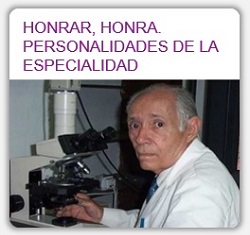Cancer scientists led by Dr. John Dick at the Ontario Cancer Institute (OCI) and collaborators at St Jude Children’s Research Hospital (Memphis) have found that defective genes and the individual leukemia cells that carry them are organized in a more complex way than previously thought. The findings, published today in Nature (DOI:10.1038/nature09733), challenge the conventional scientific view that cancer progresses as a linear series of genetic events and that all the cells in a tumour share the same genetic abnormalities and the same growth properties. «Our results show this is not the case and open the way to discover how genetic abnormalities transform normal cells into leukemic cells and the steps that have to happen to make the leukemic cells increasingly abnormal and aggressive, how leukemic cells at different steps of genetic evolution (or progression) respond to therapy, or contribute to relapse,» says Dr. Dick, Senior Scientist at OCI’s Campbell Family Institute for Cancer Research, the research arm of Princess Margaret Hospital, and the McEwen Centre for Regenerative Medicine at University Health Network. Dr. Dick is also a Professor in the Department of Molecular Genetics, University of Toronto, and Director of the Cancer Stem Cell Program at the Ontario Institute for Cancer Research. The research team found that the leukemia cells taken from patients with acute lymphoblastic leukemia (ALL) are actually composed of multiple families of genetically distinct leukemia cells. They looked at how these families developed and retraced the ALL «family tree» back to its origins. They discovered that the so-called black sheep – the cells that propagate the disease and potentially survive therapy – persist through generations, and even branch off and evolve to form genetically distinct cancer families. Some of these genetic families dominate, making it appear that the leukemia cells only have one set of genetic abnormalities while other families are very rare, explaining why they had never been seen before. The study results provide data linking genetic events in ALL taken from patients when first diagnosed to their future clinical survival. In the lab, the researchers reproduced human ALL in mice transplanted with patient leukemia samples. Sometimes the dominant genetic family would grow in the mice while in other mice the rarer families would grow. «By looking at the genetic signatures of the leukemia cells in the different mice we were able to figure out their genetic ancestry and the evolutionary trajectory that that particular leukemia took. We found that if a particular gene family was mutated, the tumours were aggressive when grown in the mice. The patients with the corresponding tumours had poorer survival showing that the human-mouse transplant system could be very useful in predicting patient outcome.» This insight into genetic diversity has positive implications for cancer treatment, says Dr. Dick. «Understanding the complexity of cellular relationships and the existence of distinct genetic families of leukemia cells will shed light on why some cells of the cancer are not killed by the therapy and eventually regrow resulting in disease relapse, and help accelerate the development of tailored therapies to wipe out all the unwanted branches in the genetic tree.» Research collaborator Dr. Charles Mullighan, a hematologist at St. Jude Children’s Research Hospital, adds: «Overall, the study proved that many leukemias comprise multiple subpopulations with different genetic alterations, and that these genetic alterations may evolve over time. The main clinical implication is that we now need to extend this work to identify genetic changes at low levels at diagnosis that confer a high risk of treatment failure and relapse and find ways of targeting them.» The current research builds from earlier findings published in 2007 when the Dick team developed a method to convert normal human blood cells into «human» leukemia stem cells. The converted cells, when transplanted into special mice that permit the growth of human cells, can replicate the entire disease process from the very moment it begins. In 1994, Dr. Dick identified the first cancer stem cell in leukemia, following on the original discovery in 1961 of the blood stem cell by renowned OCI scientists, Drs. Ernest McCulloch and James Till — a discovery that formed the basis of all current stem cell research. Dr. Dick, who holds the Canada Research Chair in Stem Cell Biology, has published other findings showing that colon cancer arises from stem cells specific to the tumour.
http://www.eurekalert.org/pub_releases/2011-01/uhn-csd011711.php
Cancer scientists discover genetic diversity in leukemic propagating cells
En: Noticias ![]()










